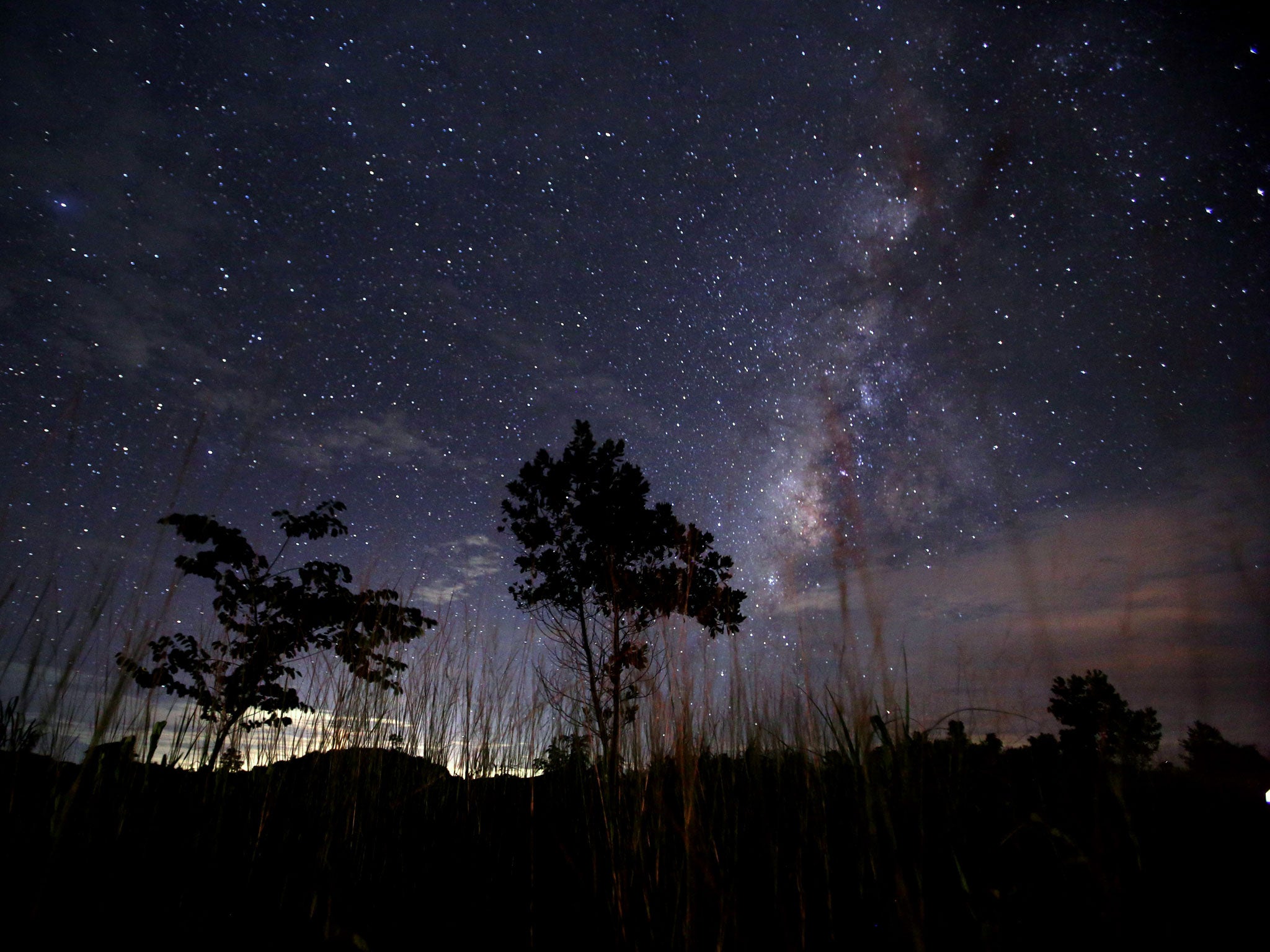Stargazing: Explore the glorious Milky Way at its best
The further south you go, the better it gets, as the nights draw in more quickly

At this time of year, the softly glowing band of the Milky Way arches overhead, winding its way through the constellations.
The further south you go, the better it gets, as the nights draw in more quickly. From the Mediterranean, it’s a glorious sight; but if it’s too late to book that holiday trip, staying at home is an option.
The British Isles can now boast several designated “Dark Sky” sites and Dark Sky Parks – plus Sark, created the World’s first Dark Sky Island in 2011. At all these pitch-black havens, you’re guaranteed a view of the Milky Way. To find your nearest Dark Sky site, log on to darkskydiscovery.org.uk.
But what is The Milky Way? The classical civilizations always associated it with milk – hence its name the Via Lactaea. In Greek legend, Hera (wife of Zeus) is mistakenly given Heracles (the Roman Hercules) to suckle – and, recoiling in panic, spills her milk all over the sky.
The Finns interpreted the Milky Way as a path, used by migrating birds to fly south (“The Pathway of the Birds”). Astonishingly, this has turned out to be true: migrating birds do use the Milky Way as an aid to navigation – as do dung beetles. But knowledge of the true nature of the Milky Way had to wait until 1609, and Galileo. He concluded that “all the disputes which have vexed philosophers through so many ages have been resolved. The Galaxy is in fact nothing but congeries of innumerable stars.”
What a concise and accurate description! And you can recreate Galileo’s “discovery” of the Milky Way by sweeping a pair of binoculars along its length. Packed together are stars, some appearing almost on top of each other; compact clusters of stars; misty patches of glowing gas – nebulae – which are cosmic factories poised to create the next generation of stars.
Perspective makes the Milky Way appear as it does. We live in a Galaxy of some 200 billion stars, of which our local star, the Sun, is just one. The stars are arranged in a flat disc, so that the more distant stars look as of they are grouped into a band, like the lights of a far-off city.
Now, back to sweeping the Milky Way. Between the constellations of Cygnus and Aquila, you’ll see a dark rift. In the past, astronomers thought that rifts in the Milky Way were “holes” in space, where we could peer beyond ourGalaxy to the Universe outside... Now we know that the rifts are just the opposite: they are vast clouds of cosmic “soot” and gas, on the brink of collapsing to make new stars.
Finally, to the Milky Way’s “deep south” – in the constellations of Scorpius and Sagittarius – where we hit the centre of the Galaxy. Towering clouds of dense dust hide our Milky Way’s secret: the black hole which powers our Galaxy’s heart. Weighing in at four million Suns, this cosmic monster devours anything that strays too close. Ten million years ago, it “ate” a vast gas cloud, which resulted in it belching out two giant bubbles of super-hot gas.
Make no mistake about it – downtown in the Milky Way is not the place to be!
What’s up
It’s not often we kick off with a sky-sight that’s not visible until the early hours of the morning – but this one is well worth an early alarm call (or a late night the evening before). Around 4.30 on the morning of 18 August, you’ll see the two brightest planets virtually on top of each other, as they rise low in the north-east.
Venus – the more brilliant – is passing just one-fifth of a degree from giant planet Jupiter: less than the width of a cocktail stick held at arm’s length. (There’s no chance of a real cosmic collision, as Jupiter is four times away than Venus.) A “conjunction” this close is highly unusual: some astronomers believe the Star of Bethlehem was a similar Venus-Jupiter conjunction in 2BC. Back in the evening sky, look out for the planets Mars and Saturn low in the west after sunset. The most distant planet, Neptune, is at its closest to Earth this month, but you’ll need good binoculars or a telescope to pick it out among the stars of Aquarius.
On 10 August, the Moon is full at the same time as it’s closest to the Earth in its oval-shaped orbit, meaning it’s 14 per cent bigger and 30 per cent brighter than a full Moon at its furthest from Earth. The Moon’s bright light will spoil one of the best annual displays of cosmic fireworks, the Perseid meteor shower. These shooting stars are debris from Comet Swift-Tuttle, burning up as they smash into Earth’s atmosphere. This year, you may be luckier catching stray Perseids earlier in the month after the Moon has set than on the actual peak due for the night of 12-13 August.
Subscribe to Independent Premium to bookmark this article
Want to bookmark your favourite articles and stories to read or reference later? Start your Independent Premium subscription today.

Join our commenting forum
Join thought-provoking conversations, follow other Independent readers and see their replies